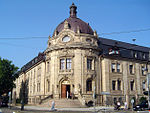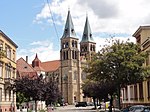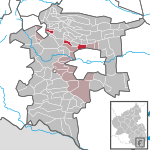Siege of Landau (1793)

The siege of Landau (20 August – 23 December 1793) saw a corps from the Kingdom of Prussia commanded by Frederick Louis, Prince of Hohenlohe-Ingelfingen lay siege to a 3,800-man French Republican garrison led by Joseph Marie Tennet de Laubadère. Since the Prussians lacked siege cannons, they tried to starve the French defenders into surrender by blockading the city. In late December, the French Army of the Moselle under Lazare Hoche and Army of the Rhine under Jean-Charles Pichegru defeated the Coalition armies opposed to them, forcing the Prussians to raise the War of the First Coalition siege. Almost two months after Landau was surrounded, the Coalition army won a victory in the First Battle of Wissembourg, driving the Army of the Rhine deep into Alsace. The French government placed a priority on relieving Landau, so Pichegru's army began a sustained offensive against Dagobert Sigmund von Wurmser's Coalition army in the Battle of Haguenau. The effort finally succeeded when Hoche's army outflanked Wurmser in the Battle of Froeschwiller and then the combined French armies won the Second Battle of Wissembourg over Wurmser and Charles William Ferdinand, Duke of Brunswick-Wolfenbüttel in late December.
Excerpt from the Wikipedia article Siege of Landau (1793) (License: CC BY-SA 3.0, Authors, Images).Siege of Landau (1793)
Weißquartierstraße,
Geographical coordinates (GPS) Address Nearby Places Show on map
Geographical coordinates (GPS)
| Latitude | Longitude |
|---|---|
| N 49.2 ° | E 8.1166666666667 ° |
Address
Weißquartierstraße
76829 , Kernstadt
Rhineland-Palatinate, Germany
Open on Google Maps








